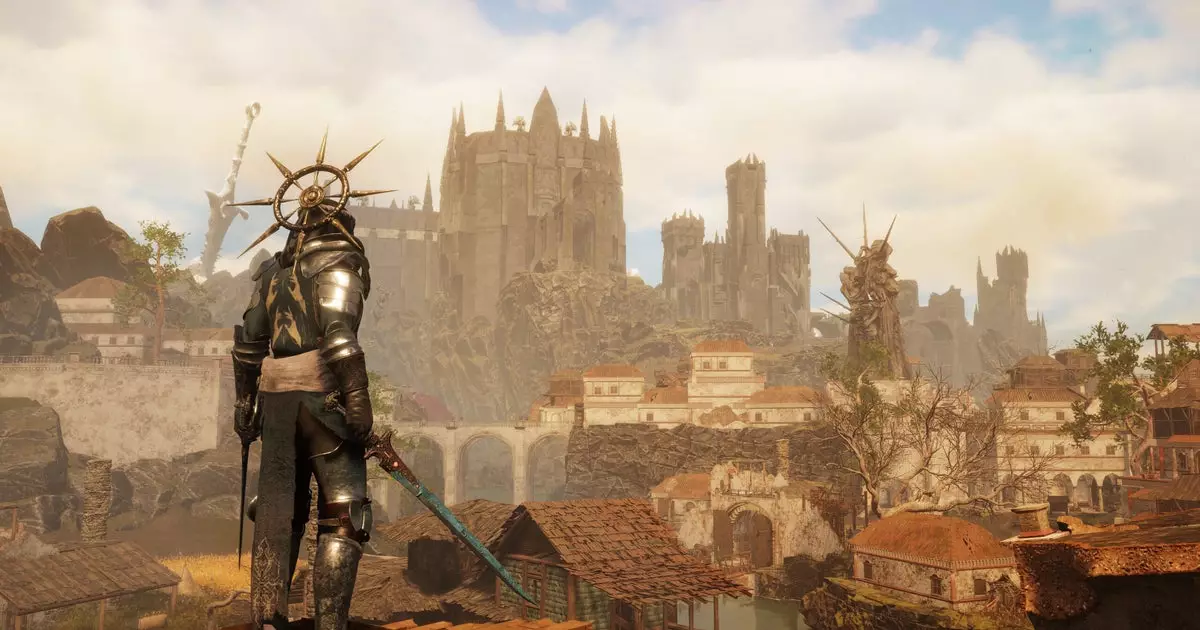In the ever-expanding world of fantasy role-playing games, Tainted Grail: The Fall of Avalon emerges as a noteworthy contender, especially for those seeking an immersive experience beyond traditional franchises like Skyrim and Oblivion. Set against the backdrop of an evocative yet grim reimagining of Arthurian legends, this game’s narrative unfolds nearly 600 years post-King Arthur’s reign, casting players into an Avalon riddled with decay, strife, and the ominous specter of the Wyrdness. The game taps into the deeper, often shadowy undercurrents of timeless myths, inviting players into a world where honor and valor have succumbed to a more cynical and morally ambiguous reality.
What offers an intriguing aspect about The Fall of Avalon is its scope. The game is crafted to span between 50 and 70 hours, richly dotted with over 200 side quests alongside a variety of engaging activities—ranging from house decoration to farming and perhaps even an innovative take on journaling or photography, potentially resembling experiences like Eastshade. Such mechanics could be vital for a game that aims to create personal connections between the player and the environment, albeit it must transcend simple mechanics to become truly engaging.
The Thrill of Choice and Customization
The beauty of Tainted Grail lies in its promise of mastery over one’s destiny. With a flexible character customization system, it ardently embraces “limitless playstyles.” Whether players wish to embody a muscle-bound alchemist or a roguish archer, every choice could alter the narrative and gameplay experience dramatically. This fluidity allows players to forge an identity uniquely theirs while simultaneously tackling the significant challenges presented by the game’s dark world.
However, this fluidity also raises questions. Will the choices players make feel genuinely impactful, or will they be overshadowed by the all-too-familiar narrative pitfalls of morally grey storytelling? The industry has seen an oversaturation of narratives that claim depth but trend towards predictability. While the premise of a “mature” story invites curiosity, it must be underpinned by authentic choices—ones that don’t just masquerade as deep character arcs but reverberate through gameplay and story progression.
An Unforgiving World
No great epic is without its adversities, and Tainted Grail introduces players to a world that intensifies in danger as darkness falls. The Wyrdness comes alive at night, transforming the landscape into a battleground—both physically and emotionally. Players equipped with an arsenal of skills and perks must navigate this changing environment while confronting foes shaped by what appears to be some ancient curse unleashed by King Arthur himself.
However, the storyline does take a dark turn with the introduction of the “Red Death”—a plague that manifests as a harbinger of suffering. The desperate search for a cure has driven priests to conduct horrifically torturous experiments, a macabre plot twist that raises ethical inquiries about sacrifice and humanity. It’s an unsettling but thrilling element, beckoning players to confront not only external monsters but the internal battle against despair and moral ambiguity.
A Medley of Aesthetic and Thematic Richness
Beyond gameplay and the narrative, the aesthetic design of Tainted Grail is truly striking. The theme of “everlasting autumn” permeates its visual elements, enriching the gameplay experience with a world steeped in melancholic beauty. The art direction draws from styles reminiscent of famed RPG creators like FromSoftware, whose works often balance elegance with decay. The environment’s layers of rot and decay resonate deeply with the concept of a once-great realm now in ruins—perfectly setting the stage for the struggles players will face.
Despite the game’s enticing visuals and grand narrative aspirations, one cannot overlook the pitfalls that can accompany such ambitious projects. As beautiful as the graphics may be, they must be complemented by a robust gameplay loop that keeps players engaged beyond mere aesthetics or superficial mechanics.
In the overarching realm of game development, Tainted Grail: The Fall of Avalon claws its way into the spotlight, promising both adventure and darkness. Whether it can fully resonate with the promise of deep storytelling and genuine emotional impact remains to be seen. However, for those willing to embark upon this journey—armed against the chaos of Avalon—there seems to be a captivating experience waiting beneath the surface.


Leave a Reply